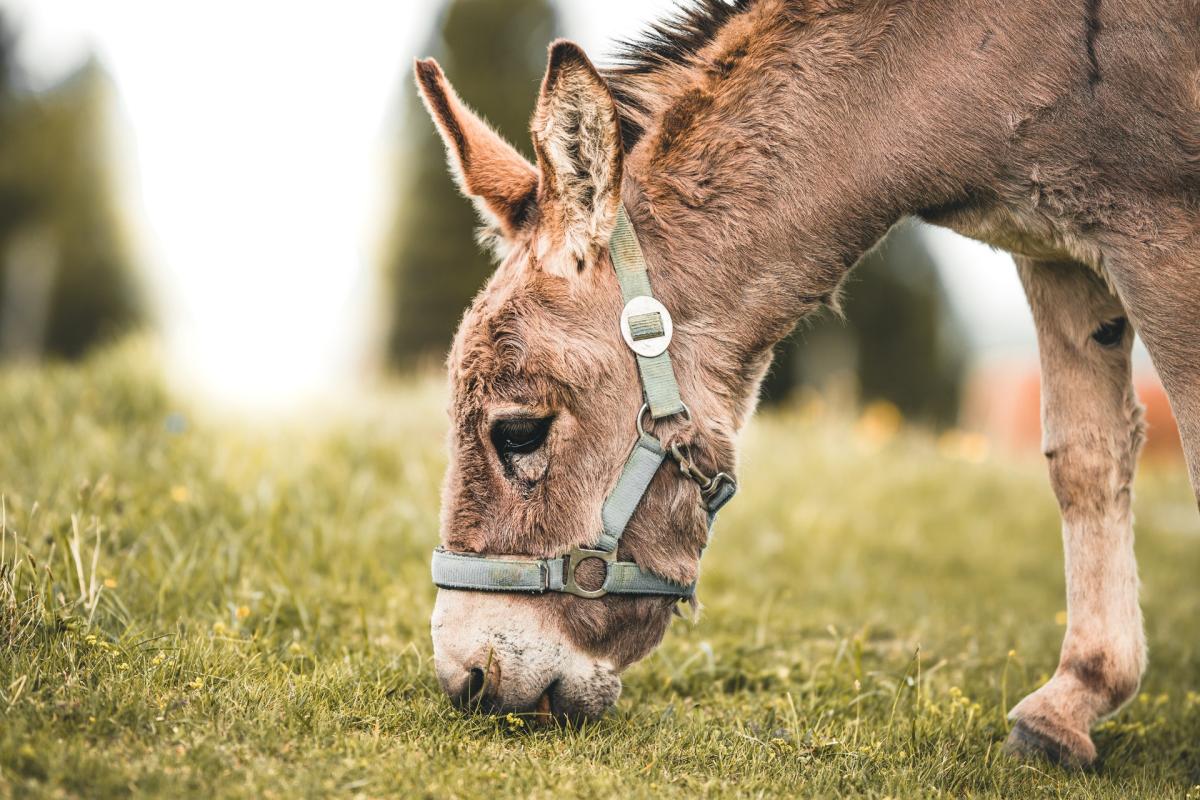Introduction
Choice is a hot topic in behavioural science. In fact, whether people prefer more or less choice has been debated for many years, though the debate originally began by considering the choices of a donkey. In the 14th century, the French philosopher, Jean Burridan suggested that a donkey facing a choice between two piles of hay - two equally tempting options - would delay the choice, a conundrum sometimes known as “Buridan’s ass”.[1]
In this article, the fifth in our series on the new frontiers of behavioural science, we look at how our understanding of choice has, and is, continuing to develop such that we are now much better able to tailor how we offer choice to people in the optimum ways, depending on the context, and even the person.
Where we were - yesterday’s research
By the late twentieth century, the accepted view was that more choice was better; the idea being that offering a wealth of choice allowed consumers their deserved freedom to better match their preferences and find exactly what they were looking for. In the last couple of decades, this view has gradually been challenged by a new camp, showcased by psychologists such as Barry Schwartz and Sheena Iyengar, who found evidence to suggest that less choice was often a good thing. They suggested that giving people fewer options led to more purchases, less choice paralysis and greater levels of satisfaction post-purchase. To some extent, this viewpoint has become increasingly relevant in an increasingly consumer society - with both huge supermarkets and online retail stores, such as Amazon - where there are often hundreds of options and variations of the same product, to suit all tastes.
The oft-quoted classic study here is what’s become known among behavioural scientists as the ‘jam study’. In this study, published in 2000 by Sheena Iyengar and Mark Lepper, shoppers presented with fewer choices of jams in a California department store ended up purchasing more jam than those presented with a larger range of jam, leading to the conclusion that less choice is better because we can be paralysed by too much choice to the extent that we fail to choose and go through with a purchase.[2]
Current developments
Today, the landscape is far more nuanced, rather than black or white, and the conclusions reached in the ‘jam study’ are now thought to be over-generalised. In 2008, an experiment attempting to replicate the jam study, but in an upscale German supermarket, found no effect from varying the amount of choice offered.[3] Other experiments using the same approach but different products - chocolates or jelly beans - have found no effect from varying the degree of choice offered.[4]
Recent research based on two meta-analyses (when researchers pool many studies together to calculate an overall conclusion) finds that there are actually some situations where people might prefer more choice and others where they might prefer less.
Firstly, in 2010, Benjamin Scheibehenne and colleagues conducted a large meta-analysis analysing 50 experiments, with a total of 5,036 participants, across 13 published or forthcoming journal articles and 16 unpublished papers between the years 2000 and 2009, from several different regions including the United States, Europe, Asia and Australia. Whilst the average effect of changing the number of choices across the studies was effectively zero, this hid a wide variation - in some contexts, wider choice seems to increase consumer purchases whereas in other contexts, it reduces them. Effects also did not seem to depend on whether the choice was hypothetical or real, and interestingly they found no evidence of cultural differences in preferences for choice.
Then, in 2015, a further meta-analysis was conducted by Alexander Chervev and his colleagues to try and pin down the exact conditions for when we really do prefer less choice.[5] They analysed 53 experiments published in 21 articles - all published between 2000 and 2014 - and identified four key factors when the number of options will affect choice. People will tend to prefer less choice when:
- They have no well-defined preferences
- People are unfamiliar with the options
- The options are similar with no clear winner
- The options are difficult to evaluate, perhaps if they are presented poorly
To think through these factors, let’s look at the scenario Schwartz describes when he wants to buy a pair of jeans and is overwhelmed when the store assistant asks him: "Do you want slim fit, easy fit, relaxed fit? You want button fly or zipper fly? You want stonewashed or acid-washed? Do you want them distressed? You want boot cut, tapered, blah blah." On and on he went. My jaw dropped. And after I recovered, I said, "I want the kind that used to be the only kind."[6]
Schwartz definitely suffers from choice overload in this context and would prefer less choice. However, many of us may have more clearly defined preferences and have jeans styles we like. In addition, we might also know what each of these terms mean and are familiar with most of the options. Some of us may even enjoy trying on different styles and select the ones we like best. Whilst Schwarz definitely meets the preconditions for choice overload, many of us would not. So, depending on what sort of shoppers a store wanted to attract, it might not be a good idea for it to reduce the number of jeans styles it offers.
A new avenue of research also suggests that the type of product or service we are purchasing also influences how many options we'd like to see. How might you go about buying perfume or aftershave? What about purchasing washing powder? The latest research suggests we approach these choices very differently.
- Some products can be defined as necessities - known as utilitarian or functional products, or things we need to buy and have a specific use for. These might be things like: detergents, toilet roll, door locks, kettles, family cars, laptops, and basic food items such as milk, bread and other staples. For most people they tend not to generate much of an emotional response in the buying and purchase process!
- Other products can be defined as luxuries - known as hedonistic products or things which are nice to have (despite often being labelled 'must haves' by the media!). These might be things like perfume and aftershave, designer clothes, luxury watches and jewellery, sports cars, artwork, designer sunglasses, gourmet food and wine, and cut flowers. These products tend to generate an emotional response and pleasure.
A recent study by Sarah C. Whitley and colleagues found that people tended to demand and prefer more choice when searching for and choosing a hedonistic product than they did for more utilitarian products. For example, they asked 286 participants to imagine they had both a car for commuting and a car they drove only for pleasure. One group got to choose a new paint colour for their commuting car, whilst the other group got to choose a new colour for the car they drove for pleasure. They found that participants in the 'pleasure-car' group wanted to choose from a larger assortment of paint colours and anticipated it might be harder to find the exact colour to match their preferences. Essentially, they were much pickier!
Another finding was that those in the 'pleasure-car' group believed their colour preferences were likely to be far more unique and different to others'. They believed their tastes were significantly differentiated from everyone else and therefore felt they needed a wider selection to choose from in order to be able to exactly match their taste.[7]
However, it is just one study and needs further research ideally in a real-world context, although it does mesh with previous research outlined above by both Alexander Chernev and colleagues, and Scheibehenne and colleagues who concluded that how sure we are of our preferences influences how much choice we prefer. If we already have an idea of what we want, it is much easier to make a choice. We are more likely to be interested in, know - or at least recognise - what we want in a hedonistic product. It's often a choice based on emotion and simply how much we like it.
Other research by Chan-Wook Park and Byeong-Joon Moon has found that when purchasing hedonistic items, we tend to rely on our subjective, personal viewpoint (do we like it?) whereas for utilitarian items, we might rely more on objective data such as product reviews (think Which?!) and recommendations.
Cass Sunstein - a behavioural scientist based at Harvard and co-author of the bestselling book ‘Nudge’ - also suggests that fun or pleasurable purchases are more suited to wider choice where we might enjoy the process of choosing, whereas dull, mundane or difficult choices might be more suited to defaults or predictive choice (perhaps guided by personalised algorithms) and can help speed up the selection process (see table below).[8] Alternatively, what’s known as ‘satisficing’ might be the best option for mundane choices that don’t really matter too much. Satisficing - picking an option that is ‘good enough’ - can be a good rule of thumb in many situations such as purchasing household cleaning products or other staple items. And this may well vary from person to person. Choosing jam for some might be a fun task, whilst for others (perhaps the ‘food is fuel’ type of person) it’s dull or mundane.
A choice matrix
|
|
Easy or automatic |
Difficult and time consuming |
|
Fun or pleasurable |
Impulse purchases eg Sweets, magazines, some clothes items |
Books, holidays, cars |
|
Not fun or pleasurable |
Household staples eg toilet paper, toothpaste, kitchen cleaners |
Pensions/retirement plans, investments and healthcare |
Source: Sunstein, C. ‘Choosing not to choose’, 2015, p185
The Future
Could concerns about self-expression increase feelings of choice overload? Looking to future avenues of research, the very latest has begun to explore even more personalised determinants of choice. For example, the universities of Princeton and UC Berkeley teamed up to test a hypothesis that choice overload may occur if people view wide ranges of choices as more representative of the self. For example, if someone asks you to pick a song to play out of a selection of 2 or 3, it may be fairly easy to come to a conclusion. However, if the selection can be drawn from a wide variety of musical styles and genres, your choice may become more reflective of how you express yourself, and as a result any selection you make becomes more open to judgement.
The team tested this theory in a number of studies; one included choosing an album to play similar to the example above. They found that the more options an individual is presented with, the more they believe their choice will reflect their self-expression and identity. This meant that people tried really hard to make the best choice they could, which increased the difficulty and stress of making a decision.
They also found evidence for other factors that increase or decrease this effect, for example, choice domain plays an important role: utilitarian choices such as brand of vacuum cleaner will not impact self-expression (unless vacuum cleaners are central to your self-identity!). Taken together, their studies show that wider ranges of choice raise the stakes, making even trivial choices seem self-relevant and important.[9]
What this shows us is that choice overload is not merely the result of having too many options. Whether or not we experience choice overload depends on the context of the decision. If a consumer is trying to make a decision about something important to their self-identity (such as choosing what shoes to wear) and which will be known publicly, they are more likely to experience choice overload compared to others who think shoes just keep your feet warm and dry.
However, previous research suggests there may be some groups who care less about self-expression than others and still feel overwhelmed by too much choice, preferring narrower choice sets. Older people seem to find it harder to navigate a larger number of choices; they often suffer from choice overload and choice paralysis and prefer simple choices with minimal options and succinct information. In a 2008 study where people were asked to make healthcare choices (for prescription drug plans, physicians, and hospitals) and everyday decisions (for cars, apartments or jams), older adults did not value choice as much as the young. They tended to prefer half the number of options to younger adults and the very old (eg 80+ year olds) tended to prefer even less choice than people in their 60s and 70s.[10] Other studies have found that the old have a greater tendency to defer decisions when faced with what they perceive as too much choice. They are also less likely to experience negative emotions afterwards, such as regret or worry about not making a purchase.[11]
Summary
As Cass Sunstein says of behavioural science in general, we now need to ‘nudge better’. Understanding contextual influences and the nuances of behavioural science is essential for making us better at what we do, making the impact of what we do stronger and more robust.
In the realm of choice, we are now beginning to understand much better when choice overload sets in and can deftly fine tune behavioural interventions and choice offered to consumers accordingly. These situations are often highly personalised and often differ from person to person depending on their interests, knowledge and awareness of options.
This has clear implications for marketers. To name a couple:
- Thinking more about which camp or which factors a product (or service) might be affected by could help to guide how much choice is offered to consumers - for instance, is the product being sold hedonistic or utilitarian? Is it an impulse purchase or a larger, more significant choice? Is it a choice most consumers are going to have clear preferences about or will be familiar with having bought on numerous occasions before? This awareness could determine whether more or less choice is a good or bad thing and how to best structure choice.
- Thinking about how a product is advertised, packaged or displayed could also be beneficial. If it's hedonistic, we might want to play on and generate a strong emotional response. If utilitarian, we might want to make objective information easily accessible and make it easy to compare to other products.
What’s more, we are still learning and developing our understanding as research continues to evolve. Whilst human behaviour is complex, we are beginning to decipher it. There is much more knowledge to come!
New Frontiers in Behavioural Science Series:
Article 1 - The Past, The Present and The Future
Article 2 - Default Settings - The most powerful tool in the behavioural scientist's toolbox
Article 3 - Social norms and conformity part 1
Article 4 - Social norms and conformity part 2
Article 5 - System 1 and System 2 thinking
About the authors:
Crawford Hollingworth is co-Founder of The Behavioural Architects, which he launched in 2011 with co-Founders Sian Davies and Sarah Davies. He was also founder of HeadlightVision in London and New York, a behavioural trends research consultancy. HeadlightVision was acquired by WPP in 2003. He has written and spoken widely on the subject of behavioural economics for various institutions and publications, including the Market Research Society, Marketing Society, Market Leader, Aura, AQR, London Business School and Impact magazine. Crawford is a Fellow of The Marketing Society and Royal Society of Arts.
Liz Barker is Global Head of BE Intelligence & Networks at The Behavioural Architects, advancing the application of behavioural science by bridging the worlds of academia and business. Her background is in Economics, particularly the application of behavioural economics across a wide range of fields, from global business and finance to international development. Liz has a BA and MSc in Economics from Cambridge and Oxford.
[1] Zupko, Jack (2003), John Buridan: Portrait of a Fourteenth-Century Arts Master, Notre Dame, IN: University of Notre Dame Press in Scheibehenne, B., Greifeneder, R., & Todd, P. M. (2010) Can There Ever Be Too Many Options? A Meta-Analytic Review of Choice Overload. Journal of Consumer Research, 37, 409-424
[2] Iyengar, S. (Columbia) & Lepper, M. (Stanford), 2000, When choice is demotivating: Can one desire too much of a good thing. Journal of Personality and Social Psychology, 79, 995-1006
[3] Scheibehenne, Benjamin (2008), “The Effect of Having Too Much Choice,” unpublished dissertation, Humboldt University, Berlin, Germany
[4] Greifeneder, Rainer (2008), “An Experimental Test of the Choice Overload Hypothesis Using Chocolate,” unpublished manuscript, University of Mannheim, Germany; Scheibehenne, Benjamin (2008), “The Effect of Having Too Much Choice,” unpublished dissertation, Humboldt University, Berlin, Germany
[5] Chernev, A., Boeckenholt, U., & Goodman, J. (2015). Choice overload: A conceptual review and meta-analysis. Journal of Consumer Psychology, 25(2), 333-358; Scheibehenne, B., Greifeneder, R., & Todd, P. M. (2010) Can There Ever Be Too Many Options? A Meta-Analytic Review of Choice Overload. Journal of Consumer Research, 37, 409-424
[6] Schwartz, B. ‘The paradox of choice’ TED Talk, 2005
[7] Whitley, S., Trudel, R., Kurt, D. 'The Influence of Purchase Motivation on Perceived Preference Uniqueness and Assortment Size Choice', April 2018, Journal of Consumer Research; Whitley, S., Trudel, R., Kurt, D. 'How Many Versions of Product do Consumers Really Want?' HBR, June 2018; Verhagen et al, 'The Effect of Product Type on Consumer Preferences for Website Content Elements: An Empirical Study' Journal of Computer-Mediated Communication, 2010, p139-170
[8] Sunstein, Cass 'Choosing not to choose', Oxford University Press, 2015, p185
[9] Cheek, Nathan N, Schwartz, Barry, Shafir, Eldar, ‘How Self-Expression Creates Choice Overload’, working paper presented at SJDM 2018
[10] Reed, A.E., Mikels, J., Simon, K. ‘Older Adults Prefer Less Choice than Younger Adults’ Psychology and Aging. 2008 Sep; 23(3): 671–675
[11] Chen, Y. Ma, X., Pethtel, O., ‘‘Age Differences in Trade-Off Decisions: Older Adults Prefer Choice Deferral’’ Psychology and Aging. 2011 June; 26(2): 269–273



